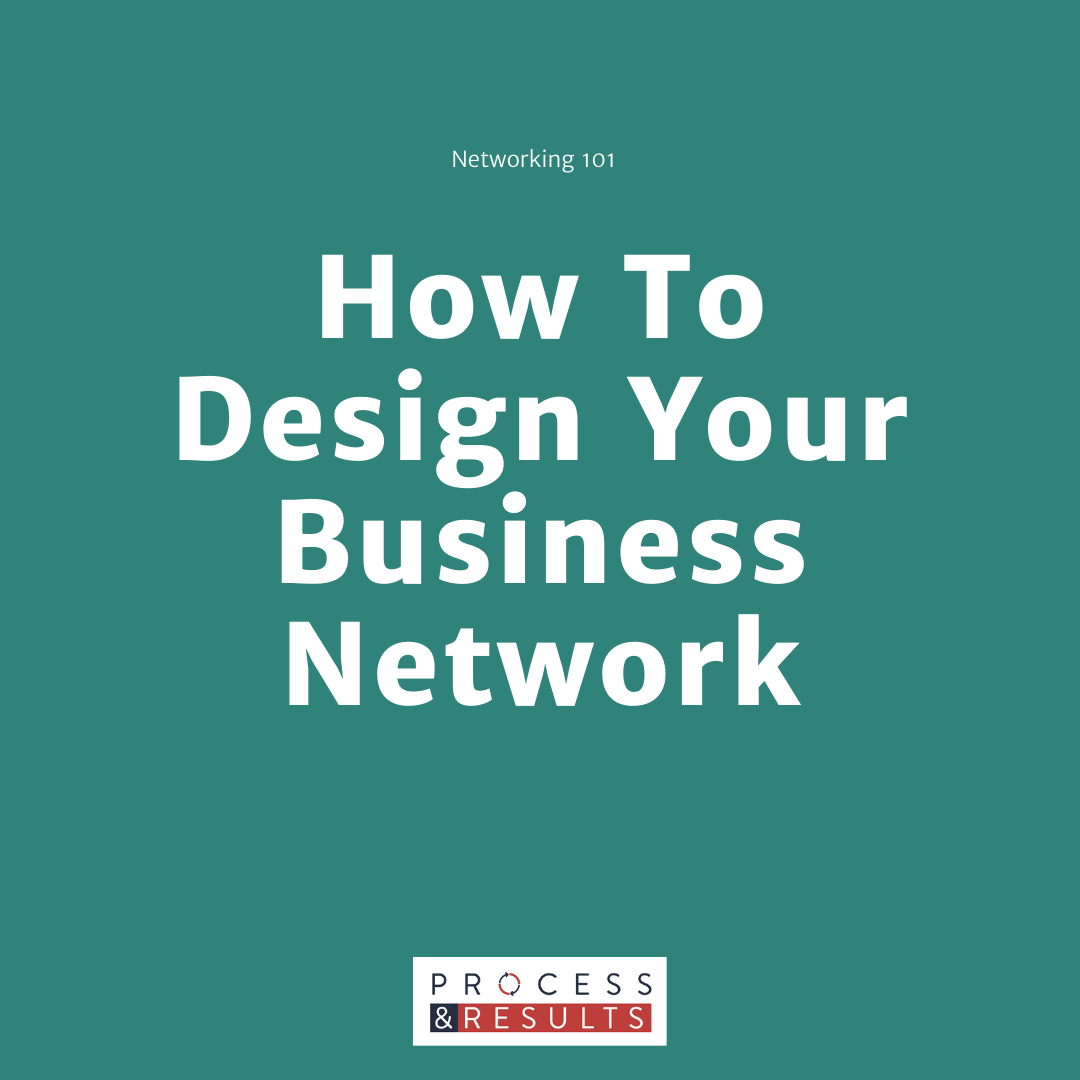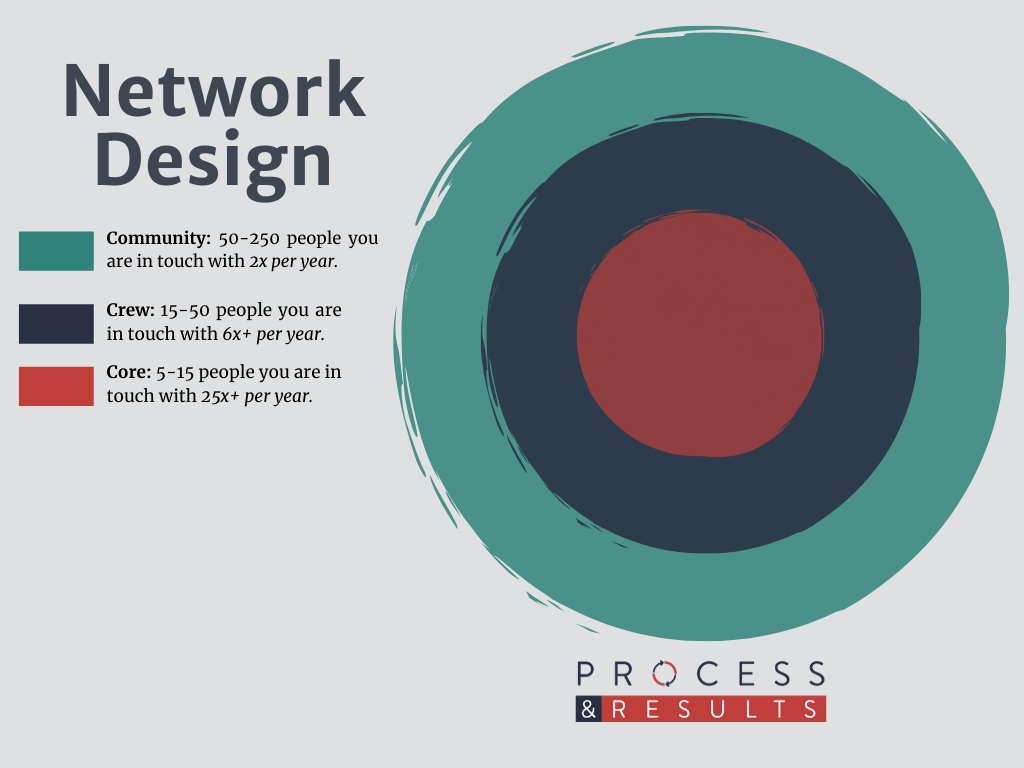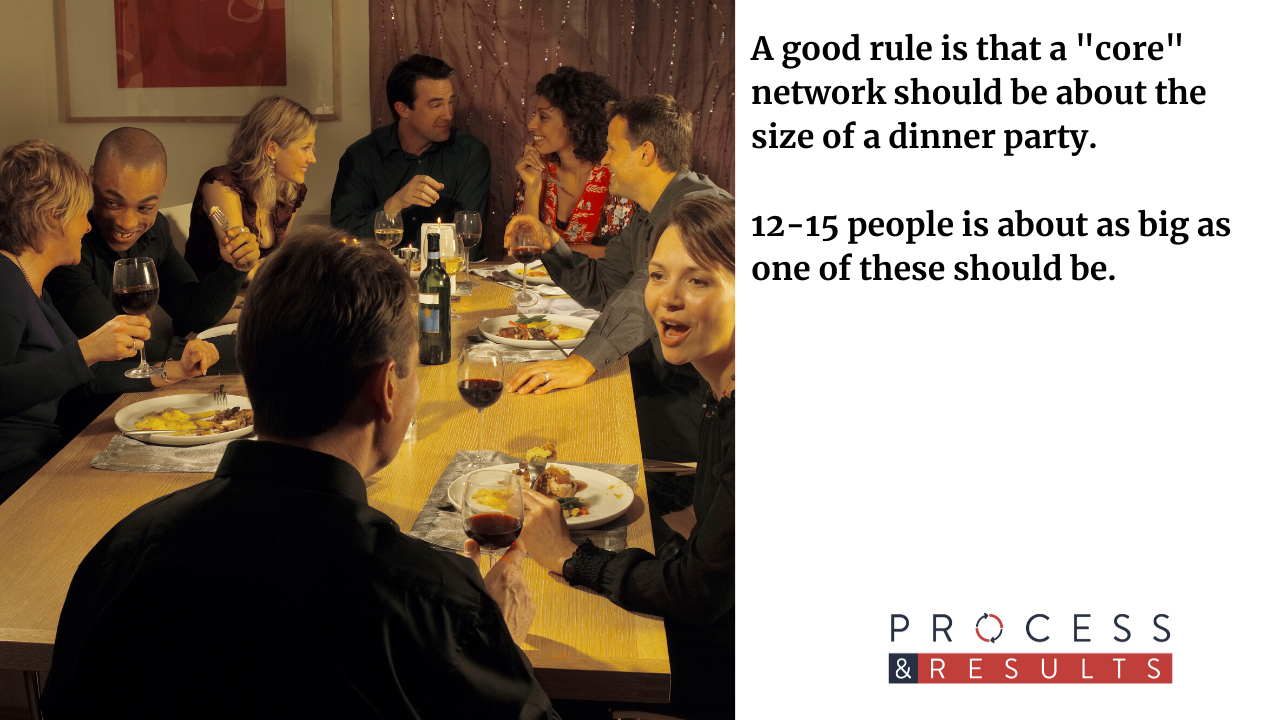
How To Design a Business Network (From Scratch)
(Proper Networking Is Underrated)
Your network is everything. It will pick you up when you are down.
It’ll help you get a job if you lose yours. It’ll deliver the introduction that delivers your sale.
When you treat it right, it can do amazing things.
It’ll even work miracles: sometimes your friends will get a job.
But there are times in our lives where we need a new network.
We outgrow ours.
We move cities or industries, and our old network doesn’t make sense anymore.
So let’s pretend we have to do this.
We’re gonna start by designing a network that matters over the long
haul.
First, Understand Some Important Truths About Networking.
We’re designing a network for a business purpose. That doesn’t mean we’re going to be transactional automatons.
A few quick rules:
- Consistency is the core currency: You gotta show up in small doses over a long period of time to make everything work.
- It’s not always equal in networking. There will be times when someone in your network is critical to your business, but you aren’t critical to them. Take the long view and play the long game, and don’t have an ego about this stuff.
- You need people at different career and influence levels.
You’ll need people that are up and coming, as well as established people in your network. A robust and balanced network will be durable and serve you for a long time. - Not all relationships will deliver equally: Every person is important but not every relationship will deliver equal results to you. You gotta prioritize the most important ones and still cover the rest.
- People change roles over time. Sometimes they’ll become more important to you, other times less.
- You have to maintain your relationships. Sometimes you have to do all the work to have and maintain good relationships. Don’t get bothered by that, it’s the cost of leadership.
When you build a network you have to design it to fit what you want, and primeit to be ready to respond to you.
The Bullseye Metaphor

I think of my network as a group of concentric circles, like a bullseye. The closer in you get, the more valuable those relationships are. You spend the most energy on the inside of the network, and you usually get the most out of the “inner” layers, but the outer layers protect things.
When designing my network, use 3 key circles.
Core: 24x: 5-15 key people in your business
For 7 years I owned a video production business. Over time, we did millions of dollars in sales. But almost half of our total business could be traced back to just 5 relationships that we had formed early in our business.
And, 2 of those 5 relationships came from the same referral source early on.
That isn’t an outlier. It’s the normal way these things work.
In the middle of the group is the “core” group.
These are the most important people in your network. Your crew, the folks that you’ll serve and that will serve you. Now, we’ve put “24x” by your core.
Your core group must be fairly small.

Remember: There were only 5 Spice Girls. Six Goonies. Jesus had 12 Apostles.
There are only 15 players on an NBA basketball team. So your “core” doesn’t need to be big.
I’d make an effort to include in this group:
- Dream prospects: People you’ve always wanted to work with, life-changing businesses.
- Industry Influencers: People that can offer true influence to you.
- Complimentary Companies (i.e. if you’re Realtor, have a
Lender, if you’re a Tax Attorney, have a CPA).
Crew: 8x: 15-50 Key People
The next part of your network is a little bigger. It’s not as dense, but you’ll still get good business results from energy spent in this group.
It’s also where your “future” core group will come from, and when a “core” relationship runs its course, it’s where the people default to.
People to look to include in your inner ring:
- Current & Past Customers: Current and past customers can come from this group.
- Rising stars: it’s always fun to help people on their way up.
- Indirect Competitors: When someone is a commercial Realtor, and you do residential, this might be a good fit.
- Vendors & Suppliers: Your key suppliers. Good businesses treat suppliers like family.
- Media and Bloggers: You want to make sure you have media and bloggers in your industry in your network. Both folks who are in your geographic locale, as well as people in the industry you serve. This is generally a good place to place them.
Community: 2x: 50-250 People
I think of the community as “incubating people to go deep with someday.” It’s always good to have people that you’re staying in touch with deliberately.
The idea here is to build connections with a lot of people for the future. Because, if you plan on being in business in the future you’ll need to connect with people later. And you want to have a good supply of people that you’ve helped out over the course of your life. This is your “community.”
Again, we’re deliberately interacting with our network. This bears fruit over the long haul. It takes 12-15 minutes a day, 5 days a week but that secures your business and your future.
Sometimes you’ll make them into customers. Sometimes they’ll be your friends. Sometimes, nothing will happen.
This group should include:
- Leads that didn’t quite convert.
- Vendors/ People that you almost hired.
- Random people that you meet at business networking functions – and hit it off with.
A Network Checklist
Since we are designing a network to serve us, we want to think in terms of things that it should have in it.
First, we’ll want to have one or two of every vendor in our industry. This means, if we’re a residential plumber, we’d want to have at least one of every trade that works on a house, preferably at different price points. If we’re a financial planner, we’d want to ensure a full list of finance, real estate and insurance pros in our network.
How (And How Often) to Contact These People:
Now, each of our groups of people includes a title as well as a number after.
The title is how we think of them.
The number is how many times a year we contact them.
This means we’ll be touching our core group at least twice a month.
Most CRMs have an easy way to figure out who you have contacted and when.
A Few Closing Thoughts
We do most of the work. A network doesn’t maintain itself. We do the work and put the time in. Our network is something we manage for us. We do it at work and in our career, but the work belongs to and benefits us.
It’s in addition to our CRM work, lead follow up, prospecting and our direct sales efforts. The idea is that the network belongs to us, the prospecting work belongs to our company.
The reason it’s there is because things change. We may have to switch companies or industries. The more people that we are kind to over the long haul, the more options we accrue.
This can be done in 15 minutes a day or less.
Other Resources On Networking
JordanHarbinger.Com/Course– This is my friend Jordan’s excellent course on networking.
It’s what has driven him through a nasty business break up to bounce even higher than he was before in the world of media and podcasting.
Dig Your Well Before You’re Thirsty: Harvey McKay has great lists about what you should know about the people in your network. This is great if you’re local and doing a lot of local business, and a great way to think about people in general.
Your Network Is Your Net Worth: Porter Gale: This was a great look at 2nd wave social media and what could be possible with a high-velocity modern network.
Like this post? Get A New Business Process Every Monday
Join our newsletter, and we'll send you a new business process every Monday.
We cover everything that service businesses need to improve.
